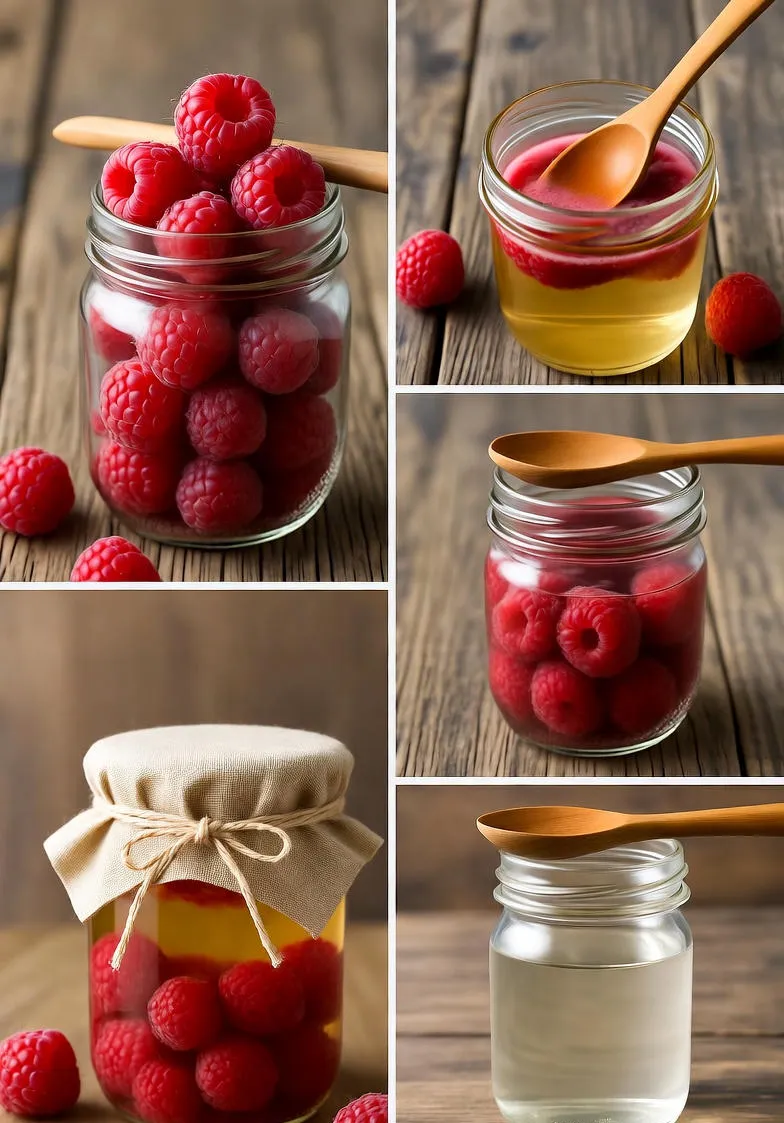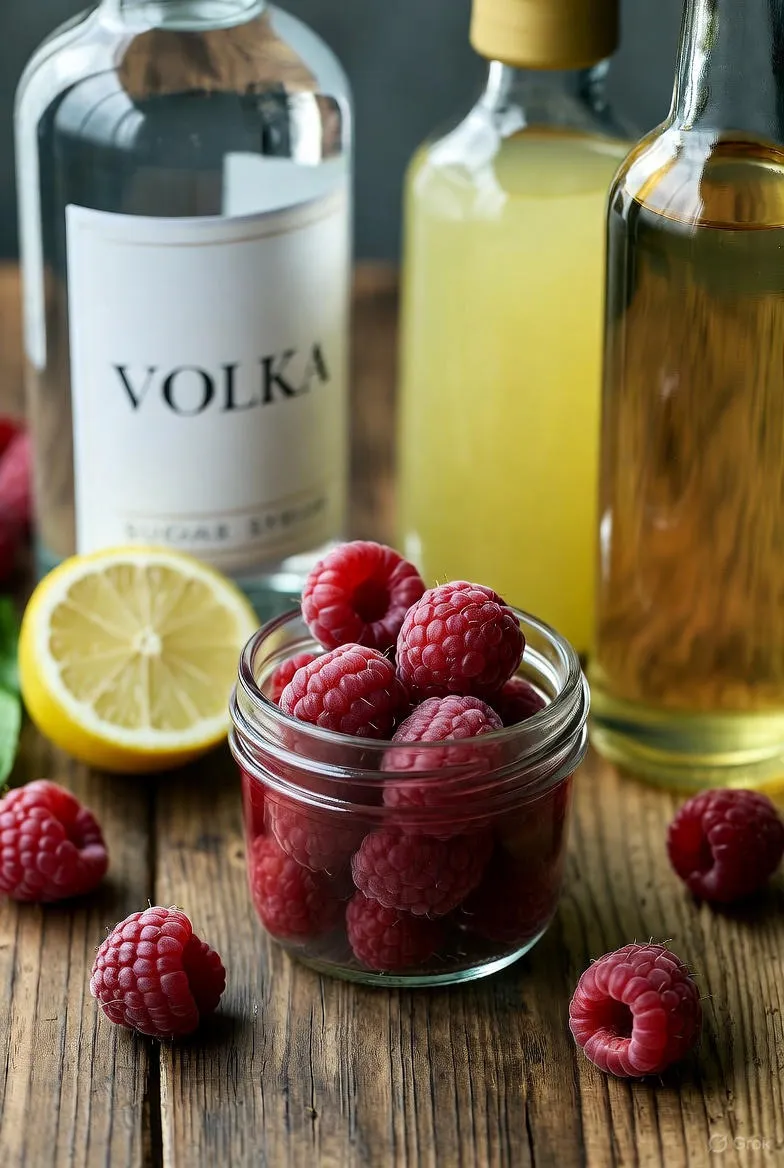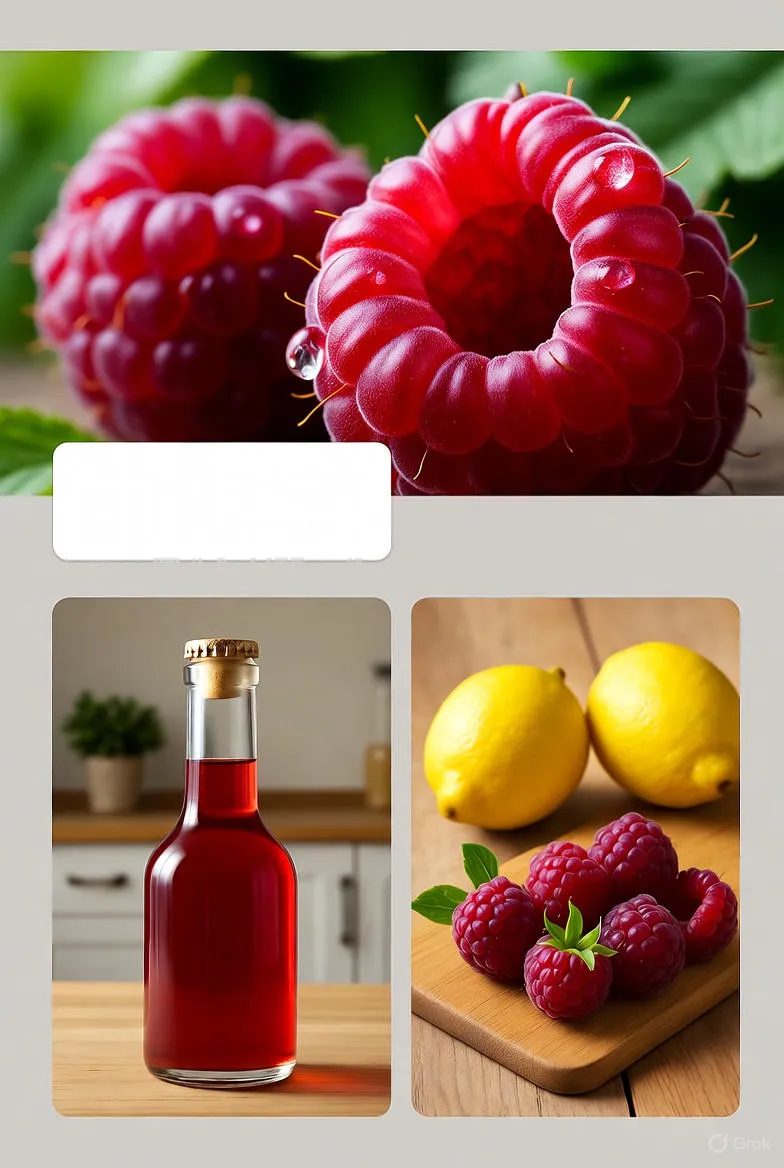How to Make Homemade Raspberry Vinegar: A Simple Step-by-Step Guide
Discover how to make homemade raspberry vinegar with our easy step-by-step guide. Learn ingredients, tips, variations, and creative uses for this tangy, antioxidant-rich condiment perfect for salads, marinades, and cocktails.

Introduction to Raspberry Vinegar
Raspberry vinegar is a delightful infusion that captures the tart sweetness of fresh raspberries combined with the tangy bite of vinegar. This versatile condiment has been cherished for centuries in culinary traditions, particularly in French and Mediterranean cuisines, where it's used to elevate dressings, marinades, and even cocktails. Making it at home not only allows you to control the quality of ingredients but also infuses your kitchen with the vibrant aroma of summer berries. Whether you're a seasoned home cook or just starting your fermentation adventures, crafting raspberry vinegar is an accessible project that yields a product far superior to store-bought versions.
The process involves macerating raspberries in vinegar, allowing the flavors to meld over time. This method draws out the fruit's natural sugars, acids, and antioxidants, resulting in a ruby-red elixir that's as beautiful as it is flavorful. Beyond its taste, raspberry vinegar offers potential health perks: raspberries are packed with vitamins C and K, fiber, and polyphenols that may support heart health and reduce inflammation. When paired with vinegar's acetic acid, it can aid digestion and add a probiotic boost if lightly fermented.
Why Make Your Own Raspberry Vinegar?
Store-bought options often contain preservatives and artificial colors, diluting the pure essence of the fruit. Homemade raspberry vinegar, on the other hand, lets you experiment with organic berries at their peak ripeness, ensuring maximum flavor intensity. It's also cost-effective— a pint of fresh raspberries and a bottle of basic vinegar can produce several cups of finished product for pennies compared to gourmet prices.
Moreover, this DIY endeavor connects you to traditional food preservation techniques. In the 18th century, fruit vinegars like shrub were staples in households for both cooking and medicinal tonics. Today, it's a nod to sustainability: use up bumper crops from your garden or farmers' market hauls, reducing waste while creating something shelf-stable that lasts months.
Ingredients You'll Need
Gathering the right components is straightforward, with most items likely already in your pantry. For a basic batch yielding about 2 cups:
- 2 cups fresh raspberries: Opt for ripe, juicy ones. Frozen works in a pinch, but thaw them first to release juices.
- 2 cups white wine vinegar or champagne vinegar: These provide a light, fruity base that complements the berries without overpowering them. Avoid harsh distilled white vinegar unless you want a sharper edge.
- 1/2 cup granulated sugar: This balances the acidity; adjust to taste for a less sweet version.
- Optional add-ins: A sprig of fresh mint, a cinnamon stick, or a few black peppercorns for nuanced flavors.
Scale up as needed, maintaining a 1:1 ratio of fruit to vinegar for optimal extraction.
Essential Equipment
You won't need fancy gadgets for this. A few basics suffice:
- A wide-mouthed glass jar (quart-sized mason jar ideal) for infusing.
- A fine-mesh strainer or cheesecloth for straining.
- A wooden spoon for mashing.
- Glass bottles with airtight lids for storage.
- Optional: A funnel to avoid spills during bottling.
Ensure all equipment is clean and sterilized—boil jars for 10 minutes or run through a dishwasher cycle—to prevent unwanted bacteria.
Step-by-Step Instructions
Follow these steps for foolproof results. The entire process takes about 20 minutes of active time, plus 1-2 weeks of passive infusing.
Prepare the Raspberries
Gently rinse the raspberries under cool water and pat dry with a clean towel. Place them in your glass jar, then use a wooden spoon to lightly crush them. This releases their juices without turning them to mush, preserving some texture for visual appeal.
Add Sugar and Vinegar
Sprinkle the sugar over the crushed berries and stir until mostly dissolved. Pour in the vinegar slowly, ensuring the fruit is fully submerged. If using add-ins like herbs, tuck them in now. Seal the jar loosely with a lid or cheesecloth secured by a rubber band to allow gases to escape during initial maceration.
Infuse the Mixture
Place the jar in a cool, dark spot like a pantry shelf. Let it sit for 1-2 weeks, shaking gently daily to redistribute flavors. Taste after a week: the vinegar should take on a deep berry hue and balanced tartness. For stronger intensity, extend to two weeks.
Strain and Bottle
Line a strainer with cheesecloth over a bowl and pour the mixture through, pressing lightly on the solids to extract every drop. Discard the pulp (or compost it for your garden). Funnel the strained vinegar into clean bottles. Seal tightly and store in the fridge.
Your raspberry vinegar is now ready! It will continue to develop subtle flavors over the next few days.
Variations to Try
Once you've mastered the basics, get creative. Here are some twists:
- Herbal Infusion: Add rosemary or thyme for an herby twist, perfect for savory dressings.
- Spiced Version: Incorporate whole cloves or star anise during infusion for a holiday-inspired warmth.
- Low-Sugar Option: Skip the sugar entirely for a puckeringly tart vinegar suited to bold meats.
- Mixed Berry Blend: Combine raspberries with blackberries or strawberries for a complex fruit profile.
- Fermented Shrub: After straining, add a bit of mother culture from raw apple cider vinegar to encourage light fermentation, boosting probiotics.
These adaptations keep things exciting and tailor the vinegar to your pantry staples or seasonal finds.
Tips for Success and Troubleshooting
To ensure your batch shines, consider these pointers. First, use high-quality vinegar—cheap options can impart off-flavors. Second, taste as you go; raspberry varieties differ in sweetness, so tweak sugar accordingly.
Common issues? If mold appears (rare with acidic vinegar), discard and start over—hygiene is key. Too weak flavor? Extend infusion time or use more fruit next round. Overly cloudy liquid? Double-strain through coffee filters for clarity.
For longevity, keep bottles upright in the fridge; the cold preserves vibrancy. Always label with dates to track freshness.
Storage and Shelf Life
Raspberry vinegar is remarkably stable thanks to its high acidity (pH around 3). Unopened, it lasts up to a year in a cool pantry; once opened, refrigerate and use within 6 months. Signs of spoilage include off odors or fizzing—though light effervescence from natural fermentation is harmless and adds charm.
Pro tip: Portion into smaller bottles to minimize air exposure, extending usability.
Delicious Ways to Use Raspberry Vinegar
This isn't just a pretty bottle—it's a kitchen powerhouse. Start simple with a classic vinaigrette: whisk 3 parts oil to 1 part raspberry vinegar, plus Dijon mustard and honey. Drizzle over summer salads with goat cheese and walnuts.
For mains, deglaze pans with a splash to make glossy sauces for grilled chicken or pork tenderloin. In beverages, mix into sparkling water for a refreshing shrub soda, or rim cocktail glasses with it before adding gin and tonic.
Don't overlook pickling: quick-pickle cucumbers or onions in a raspberry vinegar brine for vibrant, tangy garnishes. Even desserts benefit—a reduction simmered with sugar becomes a coulis for ice cream or pavlova.
Experiment freely; its bright acidity cuts through richness, making it a staple for balanced plates.
Health and Nutritional Insights
Beyond flavor, raspberry vinegar packs a nutritional punch. Raspberries contribute antioxidants like ellagic acid, which studies suggest may protect against oxidative stress. Vinegar's acetic acid can help regulate blood sugar when consumed in moderation.
Incorporate it mindfully: a tablespoon in dressings adds flavor without excess calories (about 10 per serving). For gut health enthusiasts, the infusion process can foster beneficial bacteria if not pasteurized.
Consult a doctor for personalized advice, especially if you have acid reflux, but for most, it's a wholesome addition to daily meals.
Conclusion
Crafting raspberry vinegar at home is more than a recipe—it's a ritual that celebrates nature's bounty and timeless preservation. With minimal effort, you gain a versatile ingredient that enhances everything from salads to sips. Next berry season, gather your jars and start infusing; the results will inspire repeat batches and shared gifts. Dive in, savor the process, and enjoy the tart-sweet symphony on your palate.
(Word count: 1,248)


